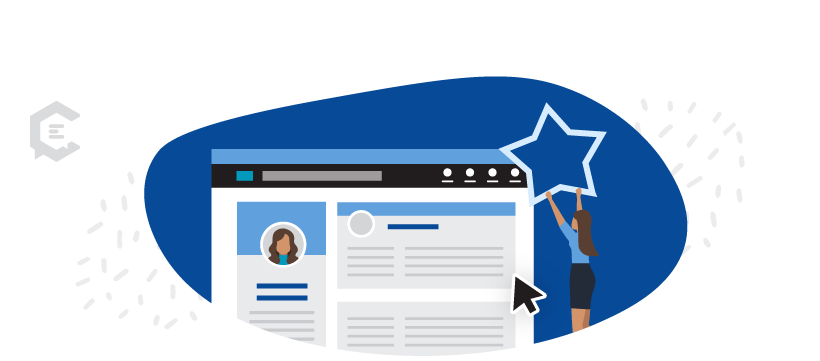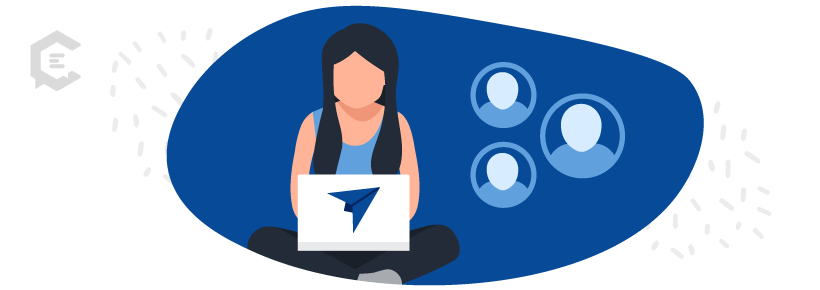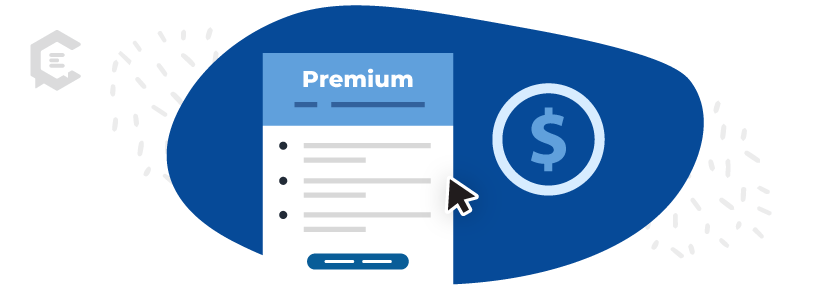With over 76 million freelancers in the U.S. alone, having a strong skill set and work ethic isn’t enough to stand out and bring in consistent work anymore. You have to also do the one thing most people hate…
Self-promotion (yuck).
And you know what that means – it’s time to focus on your professional network and embrace being on LinkedIn! If you’re already starting to scroll away, hold on! Look at these stats:
- There are six people hired on LinkedIn every minute.
- Around 87 percent of recruiters regularly use LinkedIn to vet and source candidates.
- LinkedIn is the world’s largest digital professional network, with 1 billion members.
So, whether you’re new to freelancing, experiencing a bit of a dry spell, or just want to find opportunities you’re passionate about, LinkedIn is the place to be. In this article, we’ll break down four ways you can use it to increase your visibility, attract more jobs, and boost your career.
How to Drive Your Freelance Success on LinkedIn
Start with these four approaches to put yourself in the best position to stand out from the freelance crowd.
1. Optimize your profile
Think of LinkedIn as a search engine. Companies and recruiters use LinkedIn to search for keywords that match the skills they’re looking for. So, you want to optimize your LinkedIn profile to match those relevant searches.
Here are some best practices to pay attention to:
- Create a profile. First thing first – sign up for a free profile on LinkedIn.com if you don’t yet have one.
- Make it complete. Add a professional profile photo and background photo. Fill in details in your About section, including work experience, education, and skills. Create an eye-catching LinkedIn summary. Add work samples where relevant. If you need some touchstones, here are some good LinkedIn summaries and bio examples.
- Ask for recommendations. LinkedIn recommendations are social proof your former supervisors and coworkers recommend you for relevant work. It’s helpful to start by asking people you’ve had a good working relationship with and whom you’d be willing to return the favor.
- Focus on searchable keywords. Just like content marketing, you want your LinkedIn profile to be user-friendly and search engine-friendly. Write your content honestly, and also create it with a recruiter in mind. Instead of putting “Marketing Ninja” in your headline, for example, make it more SEO-friendly by using “Digital Marketing Professional.”
A complete, full profile that’s optimized with keywords can help you pop up in more searches when recruiters and business owners are looking for freelancers with your talent and skills. If you’re really stuck, it might make sense to invest in professional LinkedIn optimization services. Just make sure to vet who you’re getting the service from.
2. Grow your network
For many freelancers, the dream is to have so many work opportunities coming your way that you get to pick and choose the exact projects you’re most interested in working on. But when you first start out, you’ll most likely have to reach out to businesses and advertise your services. Here, referrals are a gold mine.
Referrals have always been a go-to way for businesses to source better talent. According to Yello, recruiters cite referrals as their top source of hires. Plus:
- 82 percent of employers rate employee referrals as producing the best ROI out of any hiring source.
- 88 percent of employers say referrals are the best source for exceptional candidates.
- Referrals are 55 percent faster to hire than employees found through career websites.
With that in mind, use LinkedIn to cultivate a strong professional network that you can then utilize to refer you for more work. And don’t just target brands and companies. Build relationships with other freelancers. They tend to invite their networks along when their clients need help. You never know when your skills might be needed.
Tips for growing your network
Start with these and build from there:
- Add people you’ve already worked with. You probably have memorable coworkers from past jobs. Look them up on LinkedIn and send them a request to connect.
- Look at previous employer pages. You can also search companies you’ve worked for in the past and look for potential connections.
- Share your profile with your networks. If you’re on other social media channels, like Facebook or Twitter, you can create a post that links to your LinkedIn profile. That way, your other contacts can connect with you there.
- Participate in LinkedIn Groups. You can join LinkedIn Groups based on your industry and topics you’re interested in. Be sure to comment on posts of interest to you, or post your own updates when relevant. It could lead to new connections.
- Cultivate relationships. It might sound cheesy, but it’s also helpful to build real, genuine relationships on LinkedIn. Things like sending a personalized message a couple of times a year to people in your network go a long way in building a deeper relationship. Update them with where you are professionally but make sure to also ask what’s new with them and how you can help.
3. Promote yourself
Look, we know promoting yourself can feel gross. But you might be surprised at all the available job opportunities available that could benefit from your expertise. You can’t book work if you’re not getting in front of people. Someone within your network might need you at this very moment.
Don’t be shy. Use LinkedIn to let your network know you’re ready to work. You could post an update that you’re available for specific types of projects. Add a call-to-action to your network to refer you if they know someone who has a need for your work.
As you complete projects you’re proud of, add them to your LinkedIn portfolio. Doing so checks off a couple of boxes:
- It provides your network with project updates so they can check out your work, making you top-of-mind next time they hear about a relevant opportunity.
- It adds work experience that someone can review if they’re potentially interested in hiring you.
- Those additions give completeness to your profile, which factors positively into the LinkedIn algorithm to boost your visibility.
And don’t be afraid to ask a client if they’re okay with you tagging them in your updates. It could get seen by others in their network and lead to new connections.
LinkedIn also has an “Open to Work” feature for profiles. Turn it on, and your profile photo will be overlaid with a message showing other LinkedIn users you’re available to take on projects. The feature also makes you more visible to recruiters in the algorithm.
4. Use LinkedIn premium features
Finally, you can choose to invest in your LinkedIn profile by using LinkedIn Premium. Although it’s primarily a tool for recruiters, you can get some useful benefits, like:
- Send direct messages to recruiters and hiring managers.
- See who’s viewed your profile over the last 90 days.
- Access more than 15,000 LinkedIn Learning courses.
- Get interview preparation tips.
If you’re tight on cash, you can try LinkedIn Premium free for a month to see if it’s worth it.
Take the Extra Step on LinkedIn
Even if you’re chugging away with freelance work that’s keeping you happy, the ultimate goal is to consistently get better-paying, more satisfying work. LinkedIn is a great tool to achieve this if you continually optimize your presence on it so the best opportunities always come your way.
If you’re already working with us and haven’t done it yet, connect with us on the ClearVoice LinkedIn page. And if you’re not working with us, another great way to give your freelance career a shot in the arm is by partnering with us. Join our Talent Network, and we’ll match you with companies that are the best fit for your expertise and skill set.







